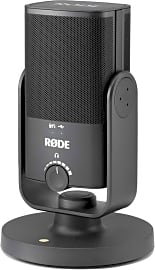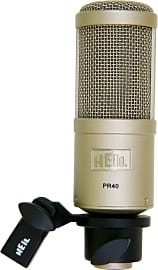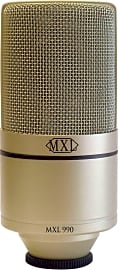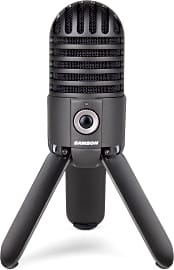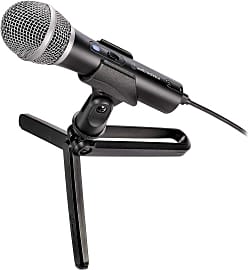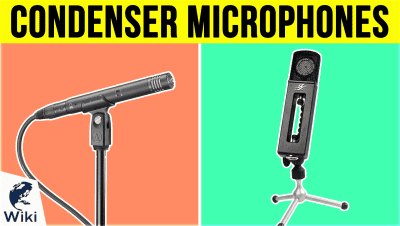The 10 Best Podcasting Microphones

This wiki has been updated 34 times since it was first published in June of 2018. As podcasts continue to grow in popularity, listeners are becoming accustomed to high-quality sound production. If you hope to meet — and even exceed — the expectations of your audience, you'll want a microphone that can create professional-grade recordings. The models we've reviewed are all capable mics, some at a budget price, others for a pretty penny, and a few in between. When users buy our independently chosen editorial picks, we may earn commissions to help fund the Wiki.
Editor's Notes
July 21, 2020:
While models like the Rode Procaster have the look, feel, and performance of professional-grade mics, it's still important to ask yourself how practical it is to get a microphone with an XLR connection instead of a USB mic. XLR will have better sound quality, and since the analog to digital conversion will be taking place in an audio interface or mixer, it's liable to be much cleaner and warmer than what you'd get through USB. That said, USB has taken some serious strides, as evidenced by the fact that Rode has a Podcaster USB mic for sale, and that the Rode NT-USB Mini is so popular.
Second to Rode in terms of popularity, you'll find offerings from Blue, who make some exceptional mics designed to work via USB. The Blue Yeti USB, in particular, has a lot to offer in terms of versatility. While broadcast style mics are great for a single speaker in the studio, they can't pick up a conversation between two people as easily. The Yeti's ability to switch up its polar pattern allows it to do both.
Of course, field work can often be as important to a podcast as a good interview, which is why we still include a number of portable options like the Samson Go Condenser and the Audio Technica ATR2100X, the former of which does undeniably sacrifice some sound quality in the name of portability, and the latter of which is limited in directionality.
June 13, 2019:
Despite a few great alternatives out there, the Rode Podcaster continues to hold the top spot, thanks in large part to its durable construction, flexible stand, and outstanding sound profile. Rode is also responsible for the only newcomer to our ranking with their versatile cardioid condenser. The Heil PR-40 slipped a few spots, as it's a pricier option than many others and it'll require many users to invest in an additional interface, as it doesn't have its own USB connection. Conversely, the Audio-Technica AT2020 climbed from the fourth spot up to number two on the strength of its clean signal and competitive price point.
What To Look For In A Podcasting Microphone
What specific features you’ll need in a podcasting microphone will have to do with the nature of your podcast, and particularly the environment in which you record.
Starting a podcast can be an intimidating prospect. Even if you have an original idea that you’re sure has legs, you still have to build an audience from the ground up. You’re also going to need to invest in the equipment necessary to make your podcast listenable to your potential subscribers. And that all starts with your choice of microphone.
Are there people who podcast with their cell phone mics? Sure. With the in-line mic on their earbuds? You bet there are. Do they sound any good? Nope.
That’s because the quality we’ve become accustomed to when listening to the best podcasts was recorded with a high-quality microphone. More often than not, this is a condenser microphone, though dynamic mics can get the job done in the right environment with a little more massaging in post.
What specific features you’ll need in a podcasting microphone will have to do with the nature of your podcast, and particularly the environment in which you record. If you’ve got a nice, soundproof setup in a basement or garage, then you’ll want to invest in the best condenser mic you can get your hands on, and make sure it’s documented under your home insurance policy. Interview-based podcasts that require you to travel and set up to record in hotel rooms or even less ideal locations will demand a more portable mic than these high-end condensers. Fortunately, many of the podcasting mics on the market utilize USB connections in lieu of the traditional XLR jack, so you can easily plug them into phones, tablets, and laptops to create a mobile studio.
Another thing to pay attention to when shopping for a podcasting microphone is its polar pattern. Some item descriptions will even include an image of the device’s polar pattern, which can help you visualize how it works. Most of the condenser mics out there have a polar pattern that might pick up more background noise than that of their dynamic cousins, so if you record your podcast in an apartment with neighbors who like to fight a lot, you might want to look for a mic with a tighter pattern, one that’s designed to cut down on background noise. The tradeoff will likely be overall audio quality, as more sensitive mics tend to capture a greater range of tones in the human voice, which can be very pleasing on a podcast.
A Brief History Of The Podcast
It may seem as though the podcast could only be as old as the Internet, since that’s the channel on which podcasting must exist. However, there are several precursors to the podcast as we know it today that relied on older forms of digital communication that existed in niche communities and among research institutions before the advent of the World Wide Web. And while these audio (and sometimes video) sources shared little in terms of content with modern podcasts, their distribution methods laid the groundwork for what would become the podcasting universe. Eventually, by the time the internet made its way into most people’s homes along an unimaginably slow connection compared to modern speeds, audioblogging had become a small, but thriving marketplace for ideas and personalities.
In 2003, after the first BloggerCon connected a large number of web and audio bloggers in the flesh, a company called AudioFeast harnessed the commonly used RSS feed to transmit MP3 files of various digital media, much of which was spoken word. In essence, it was the first podcasting service, though it didn’t have the name yet.
That name came along shortly thereafter, however, when Ben Hammersley used the term in a February 2004 article for The Guardian. It took off somewhat slowly, but was fully legitimized in June of 2005, when Apple added podcasts to their services in the iTunes media browser. Since then, countless people and institutions have tried their hands at winning the podcast wars.
Creating The Ideal Interview Space
A lot of very successful podcasts out there are interview-based, meaning that a single person or group of people set out to interview everyone from Hollywood celebrities to prisoners on death row. It’s this variety in subject matter that helps make podcasts such an exciting frontier, but a good interview doesn’t just magically happen when you put a microphone in front of your subject. Creating a space in which they feel comfortable talking and knowing how to deeply communicate with a person are two vital aspects of curating a successful podcast.
Let your personality shine here, so that guests can have something other than blank walls to look at, and so they can get a sense of who they’re talking to from the room.
Building a podcasting studio in the home will require at least two microphones — one for the host, and one for the guest. If you can only afford one really good mic, save it for your guest and use the budget mic for yourself. You can still record your intro and any ads using the better microphone, and that kind of behavior helps make your show a place future guests will want to come.
Make sure the space itself is as comfortable as possible, as well. Let your personality shine here, so that guests can have something other than blank walls to look at, and so they can get a sense of who they’re talking to from the room. Comfy chairs and copious amounts of coffee and water are always plusses, as well.
Podcasting from the field is decidedly more difficult, both for the environmental noise and the lack of control over other distractions. It would be smart to invest in a field recorder to augment your podcasting setup. This would allow you to intentionally capture things like room tone and ambient sounds that you can lay into your mix to enhance the experience for listeners.
When sound quality is an issue, it’s incredibly important that the interview itself be as compelling and personal as possible. Maintain strong eye contact with your subject, listening intently. Try to pick out something strange from within an answer to a question and don’t be afraid to pursue it. In this environment, weird is good, especially if you’re interviewing industry professionals who are used to being asked the same questions from every journalist under the sun.



